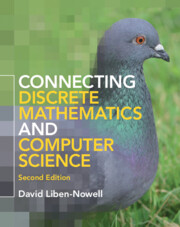Refine search
Actions for selected content:
36807 results in Cambridge Textbooks
Part E - Express trusts
-
- Book:
- A Sourcebook on Equity and Trusts in Australia
- Published online:
- 14 December 2022
- Print publication:
- 19 December 2022, pp 341-424
-
- Chapter
- Export citation
17 - Trustees’ duties and powers
- from Part F - Performing the trust
-
- Book:
- A Sourcebook on Equity and Trusts in Australia
- Published online:
- 14 December 2022
- Print publication:
- 19 December 2022, pp 426-455
-
- Chapter
- Export citation
15 - Creating an express trust
- from Part E - Express trusts
-
- Book:
- A Sourcebook on Equity and Trusts in Australia
- Published online:
- 14 December 2022
- Print publication:
- 19 December 2022, pp 387-402
-
- Chapter
- Export citation
8 - Equitable proprietary interests
- from Part C - Equity, contract and property
-
- Book:
- A Sourcebook on Equity and Trusts in Australia
- Published online:
- 14 December 2022
- Print publication:
- 19 December 2022, pp 186-203
-
- Chapter
- Export citation
Part B - Equitable remedies
-
- Book:
- A Sourcebook on Equity and Trusts in Australia
- Published online:
- 14 December 2022
- Print publication:
- 19 December 2022, pp 15-140
-
- Chapter
- Export citation
Part F - Performing the trust
-
- Book:
- A Sourcebook on Equity and Trusts in Australia
- Published online:
- 14 December 2022
- Print publication:
- 19 December 2022, pp 425-498
-
- Chapter
- Export citation
24 - Termination and variation of trusts
- from Part I - Terminating and varying trusts
-
- Book:
- A Sourcebook on Equity and Trusts in Australia
- Published online:
- 14 December 2022
- Print publication:
- 19 December 2022, pp 644-658
-
- Chapter
- Export citation

Connecting Discrete Mathematics and Computer Science
-
- Published online:
- 16 December 2022
- Print publication:
- 04 August 2022
-
- Textbook
- Export citation

The Economics of Developing and Emerging Markets
-
- Published online:
- 16 December 2022
- Print publication:
- 01 December 2022
-
- Textbook
- Export citation
Dedication
-
- Book:
- Quantum Mechanics
- Published online:
- 14 January 2023
- Print publication:
- 15 December 2022, pp v-v
-
- Chapter
- Export citation
Copyright page
-
- Book:
- Quantum Mechanics
- Published online:
- 14 January 2023
- Print publication:
- 15 December 2022, pp iv-iv
-
- Chapter
- Export citation
9 - Intervention and Human Security
-
- Book:
- Fundamental Perspectives on International Law
- Published online:
- 23 November 2022
- Print publication:
- 15 December 2022, pp 494-543
-
- Chapter
- Export citation
Preface
-
- Book:
- Quantum Mechanics
- Published online:
- 14 January 2023
- Print publication:
- 15 December 2022, pp xi-xvi
-
- Chapter
- Export citation
Bibliography
-
- Book:
- Quantum Mechanics
- Published online:
- 14 January 2023
- Print publication:
- 15 December 2022, pp 368-374
-
- Chapter
- Export citation
5 - Quantum Mechanical Example: The Infinite Square Well
-
- Book:
- Quantum Mechanics
- Published online:
- 14 January 2023
- Print publication:
- 15 December 2022, pp 89-108
-
- Chapter
- Export citation
Contents
-
- Book:
- Fundamental Perspectives on International Law
- Published online:
- 23 November 2022
- Print publication:
- 15 December 2022, pp v-xiv
-
- Chapter
- Export citation
1 - Introduction
-
- Book:
- Quantum Mechanics
- Published online:
- 14 January 2023
- Print publication:
- 15 December 2022, pp 1-4
-
- Chapter
- Export citation
How to Study International Law Using This Book
-
- Book:
- Fundamental Perspectives on International Law
- Published online:
- 23 November 2022
- Print publication:
- 15 December 2022, pp 1-15
-
- Chapter
- Export citation
Appendices
-
- Book:
- Quantum Mechanics
- Published online:
- 14 January 2023
- Print publication:
- 15 December 2022, pp 345-355
-
- Chapter
- Export citation
7 - Quantum Mechanical Example: The Free Particle
-
- Book:
- Quantum Mechanics
- Published online:
- 14 January 2023
- Print publication:
- 15 December 2022, pp 134-169
-
- Chapter
- Export citation
